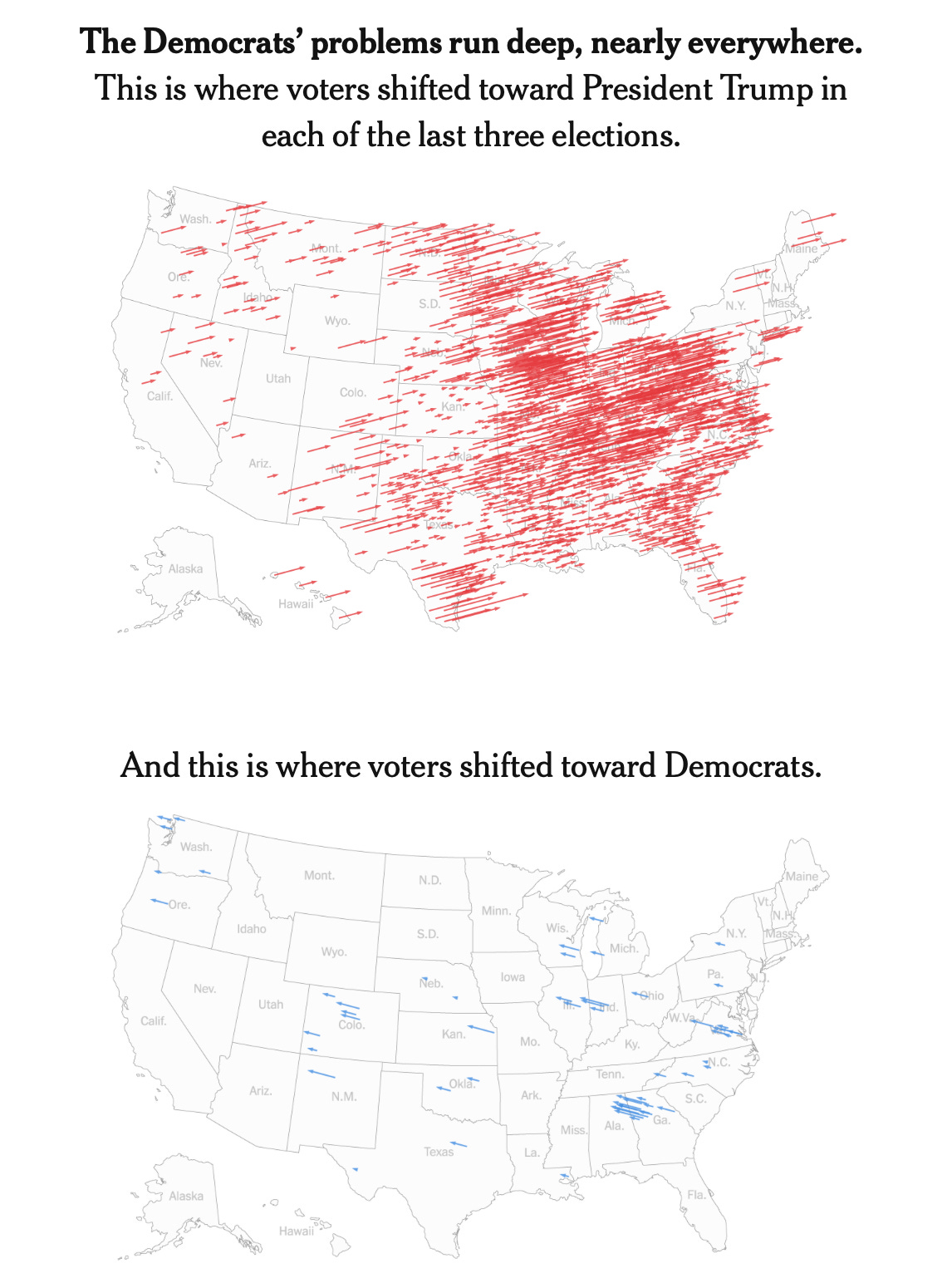A Party of Sloths
The Democrats are in serious trouble. What will it take to rouse them from their passivity?

If you recently subscribed to “Notes from the Middleground” after reading my essay in Persuasion about teaching “Trump 2.0” this last semester at Penn, welcome! I’m happy to have you here. My posts, usually published twice a week, appear in one of three newsletters: Eyes on the Right, Looking Left, and Above the Fray. The overwhelming majority end up in Eyes on the Right. That includes nearly everything I’ve written here since the 2024 election. But today’s post is an exception. It’s about the Democrats and appears in Looking Left.
Some of my subscribers dislike when I throw elbows to my left. They share my disdain for Donald Trump and his party, and my commitment to understanding them in light of political theory and history, but they are also devoted Democrats who have warm feelings for Joe Biden, were thrilled by the campaign of Kamala Harris and Tim Walz, and still seethe about Hillary Clinton’s loss in 2016.
That isn’t me. I vote for Democrats. I directionally agree with them on most issues. And I consider the Republican alternative thoroughly unacceptable. Yet I am not a devoted Democrat. A big part of the reason is that I’m not a joiner—of anything. I value my own independence too much and temperamentally resist deploying my talents to advance a cause—any cause, even a worthy one, and even one wrapped up, at this moment, with the fate of liberal democratic self-government in the United States.
But this way of thinking presumes that working to help the Democrats should take the form of deferring to and falling in line behind party leadership and elected officials, taking marching orders, rallying around candidates and nominees endorsed by the party bigwigs, and then maintaining message discipline to get them elected. That’s what I resist. But there’s another kind of devotion—one that expresses itself as tough love and a willingness to speak candidly, and even harshly, about faults. That’s what I’m offering in this post.
Gloomy Skies for the Dems
People who analyze politics were all abuzz last week about the report published by the progressive-aligned data-crunching firm Catalist. The report breaks down the 2024 electorate into demographic groups and sub-groups. It shows that Donald Trump made significant gains across most of them—and confirms in all kinds of ways the conventional wisdom that formed almost immediately following the election: that Kamala Harris lost significant ground relative to Joe Biden’s 2020 campaign, and that this loss was felt across groups that form the core of the Democratic Party’s electoral coalition. You can read the Executive Summary of the report to get the gist of the findings here, and I encourage you to do so.
But for my money, the data-based analysis published by the New York Times over this past weekend was even more illuminating about the deepening hole in which Democrats find themselves. The most clarifying image is the one that leads the graphical package. It illustrates “triple-trending counties” across the country. These are counties that have shifted in the direction of one party or the other across the previous three presidential-election cycles: 2016, 2020, and 2024.

Here’s how the Times summarizes what we see on these maps:
Mr. Trump has increased the Republican Party’s share of the presidential vote in each election he’s been on the ballot in close to half the counties in America—1,433 in all…. By contrast, Democrats have steadily expanded their vote share in those three elections in only 57 of the nation’s 3,100-plus counties.
And here are a few additional takeaways from the piece:
Republicans are overwhelmingly making gains in working-class counties.
Democrats are improving almost exclusively in wealthier areas.
Republicans are running up the score in counties where fewer people have attended college.
Democrats are gaining ground in a small sliver of the best-educated enclaves.
Given that there are more Americans who are working class and haven’t graduated from college than there are Americans who are wealthy and have graduated from college—and that the latter live in more densely populated areas than the former—this is a recipe for continued increases in Republican electoral strength going forward (all other factors being equal). Add in population shifts (away from deep-blue California and New York and toward deep-red Florida and Texas) that will benefit the GOP in House-seat allocation and electoral vote tallies after 2030, and the story for Democrats is extraordinarily gloomy at the moment.
Sources of Mistrust
The question is why.
Keep reading with a 7-day free trial
Subscribe to Notes from the Middleground to keep reading this post and get 7 days of free access to the full post archives.


